Hike Stronger With These 8 Joint-Stabilizing Exercises
This article originally appeared on Backpacker
About 1 in 5 people have Generalized Joint Hypermobility (GJH), which means nearly 20 percent of backpackers could have joints that can move farther than the "normal" range of motion. Although many with hypermobile joints are unaffected in their day-to-day lives, others deal with symptoms that alter their experience outdoors, such as pain, frequent sprains, joint subluxes (partial dislocations), and a variety of related disorders, such as higher likelihood of allergies, temperature regulation issues, collapsed arches, and dizzy spells. When hypermobility becomes pathogenic like this, doctors may diagnose it as either Hypermobility Spectrum Disorder or an Ehlers Danlos Syndrome (there are 13 types, but EDS is the most common), depending on symptoms.
You might have hypermobile joints if:
You score 5 (4 if you're 50 or older) or greater on the Beighton scale:
1 point: You can touch the floor with your hands flat and knees straight
1 point each limb: You experience hyperextension of the elbow greater than 10deg
1 point each limb: You experience hyperextension of the knee greater than 10deg
1 point each limb: You can touch your forearm with your thumb on the same limb
1 point each limb: Your pinky can bend back to 90deg with hand and forearm flat on a table
You can or used to be able to fold into a human pretzel, touch your toes to the back of your head, drop into the splits without much effort, or perform other contortionist-style "party tricks."
The Beighton is the current gold standard, but if you can’t measure the precise degree of your hyperextension at home, eyeballing the angle is fine. Generally, if your knees or elbows can go backward at all, it’s best to get checked by a geneticist because they are the most qualified doctors to do proper measurements and give a formal diagnosis.
If you suspect you are hypermobile and would like to learn more, visit the Ehlers-Danlos Society website for more information.
Can I still hike if I have hypermobile joints?
Absolutely. Being hypermobile doesn't have to limit you in the outdoors. The best and safest way to enjoy your time on the trail is to plan ahead for discomfort and pack hypermobility aides (splints, braces, or anything to provide joint support and decrease injury). With hypermobility, walking on uneven terrain can be a challenge. People with GJH usually have decreased proprioception, the sense of where your body is in space. You probably find yourself more likely to trip or stumble than some of your hiking peers; using trekking poles and properly fitting and loading your pack can help.
You may also want to consider hiking in high-top boots, and ankle, knee, or hip braces. Contrary to popular belief, braces will not weaken a hypermobile joint; they actually provide pain relief and help the body learn "normal" ranges of motion (ROM), which improves proprioception. Some people like hypermobility braces with stop-ROM to prevent uncomfortable knee hyperextension while walking and standing. Just be mindful of spots that may rub and lead to blistering and always try out the braces on a few short dayhikes before a longer trip. Make sure to pack a compression bandage (such as an ACE bandage), a SAM splint, and various dressings into your first-aid kit as well.
How can I manage hypermobility on the trail?
Hypermobility often co-exists with a hyper-reactive nervous system. If you ever experience dizzy spells after getting up from a short snack break on the trail or feel like your blood pressure drops after being on your feet for a few seconds or minutes, you might need additional tools to keep your nervous system calm on the trail.
Body temperature can be difficult to regulate with an overactive nervous system, so hikers with this condition should wear wicking layers that are easy to peel off and put on. Fingerless gloves and sleeping bag liners may also provide additional, adjustable comfort on a long trip. Also, wear compression socks rated at 20 mmHG or higher to help prevent blood from pooling in your legs. Avoid bending over at the waist for too long, which can cause blood to pool in the abdomen and trigger a drop in blood pressure when you return to upright. Good posture, even when you’re catching your breath, goes a long way.
Electrolytes also help your muscles and nerves fire more effectively, which helps fend off dizziness, fatigue, cramps, and body temperature disregulation. Some signs that your electrolyte balance is off include brain fog, "bonking" early in the hike, and legs that feel like lead.
Exercises For Joint Stability
To make sure your joints can handle the rigors of the trail, spend three to four weeks building stabilizer strength with these simple exercises. You don’t have to be explicitly hypermobile to benefit from this: Anyone who does these will feel more joint stability after doing these exercises. They create a solid foundation for all hikers, no matter their anatomy.
Mewing Tongue
Your tongue is connected directly to your deep neck flexor muscles, which are neck muscles that tend to become weak and long. This creates a forward head posture that can get worse while you’re backpacking. Strengthening the deep neck flexors will help keep your entire spine aligned and comfortable. Try to use this tongue posture while doing all of the subsequent exercises and practice as often as you can remember.
Cluck your tongue. Stop the cluck right before the "L." Your tongue should be pulled up and back against the roof of your mouth and not touching your top front teeth.
Hold this position and lightly close your teeth.
Breathe through your nose and practice holding as long as possible.
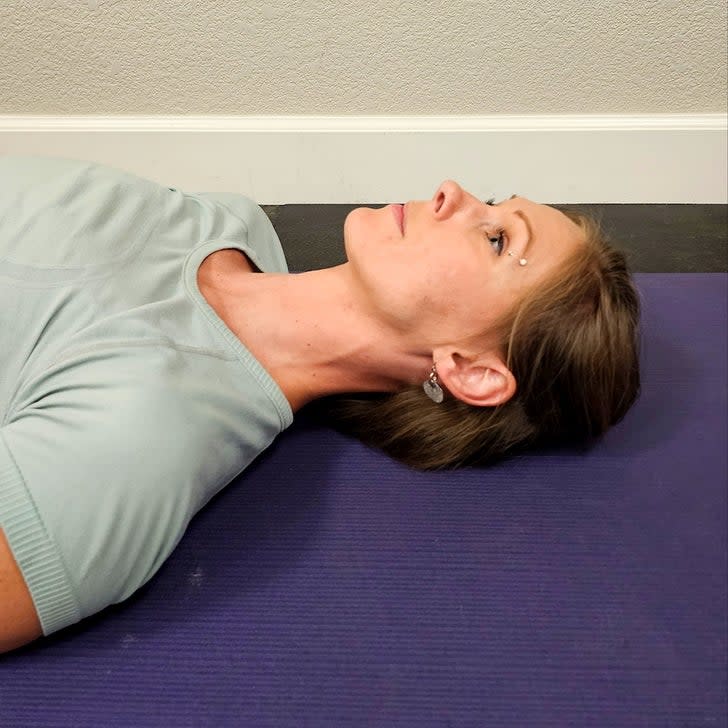
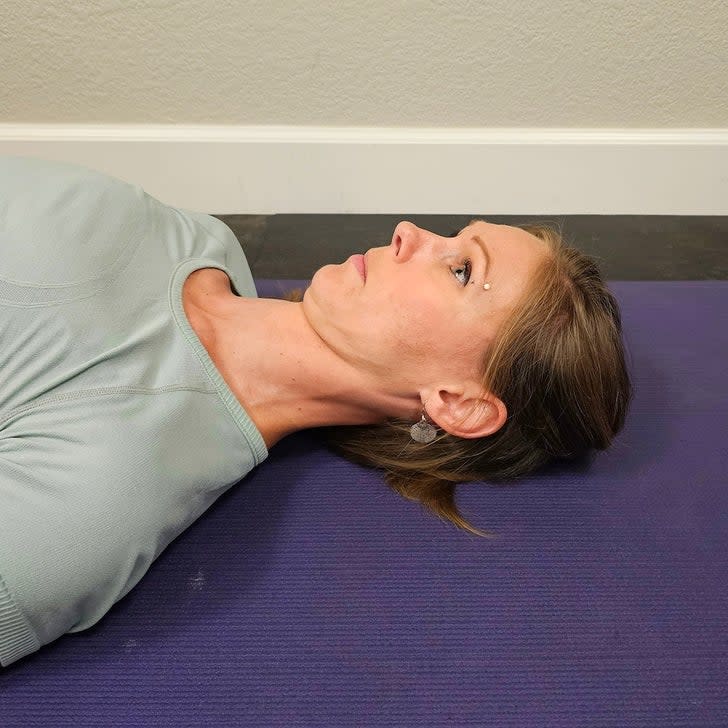
Supine cervical retraction against floor
This exercise goes hand in hand with the Mewing Tongue Posture to strengthen the deep neck flexors for spinal stability and comfort. This is also great if you experience pain across your upper back and neck on a regular basis. Perform 6 to 8 reps once or twice a day.
Lie on the floor with your knees bent and feet flat.
Hold the Mewing Tongue position through the set. Exhale for 5 seconds while you tuck your chin and press the base of your skull into the floor. Inhale for 5 seconds as you relax to the starting position.
You should feel the effort at the base of the neck or upper back, not the top of the neck.
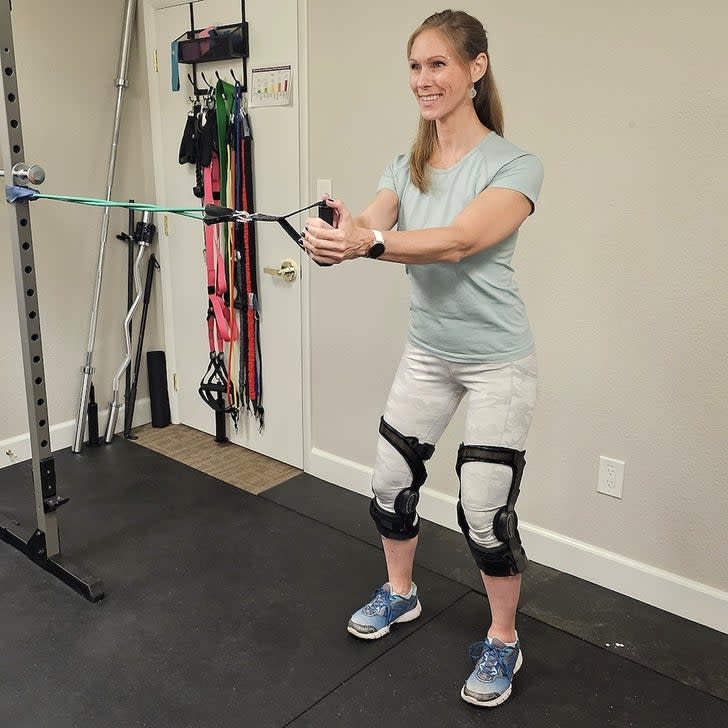
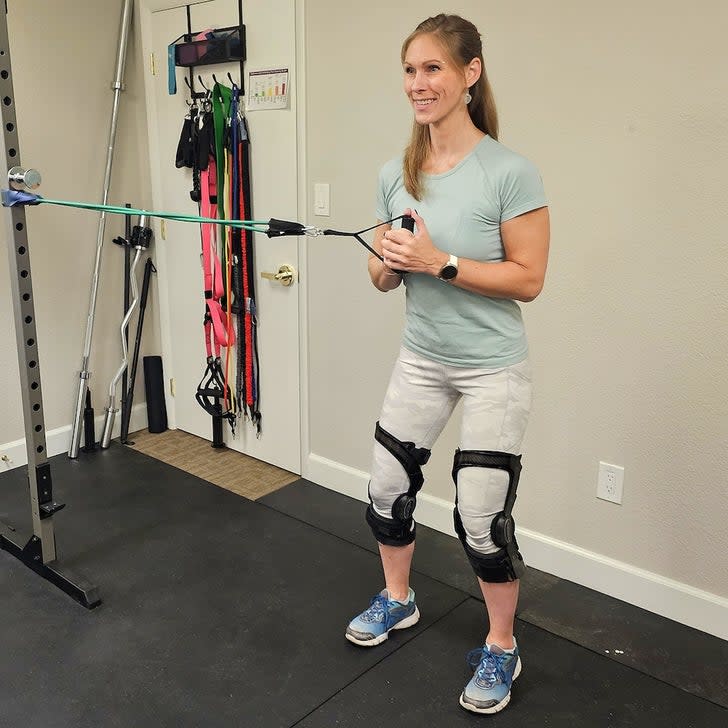
Anti-Rotation Press
Coordinating your breathing on this exercise will help to strengthen your entire core in a way that allows you to breathe better and remain stable while hiking. Perform 8 to 10 repetitions once or twice a day.
Stand in a braced stance with a resistance band anchored perpendicular to your body chest height.
Hold the end of the band against your sternum with slight tension.
Exhale for 5 seconds from your lower abdominals as you reach forward with your hands and shoulder blades and avoid rotation. Hold the Mewing Tongue position through the set.
Inhale for 5 seconds as you return to the starting position and bring your shoulder blades together and down. Be mindful to not tilt your ribs up or shrug your shoulders as you inhale on your return.
Foam Roller Core Exercises (Can Perform On Floor)
These exercises activate a pair of long, skinny, spinal stabilizers called the multifidus muscles. It’s important to strengthen these muscles because if you don’t, other muscles step in, which leads to knots and discomfort.
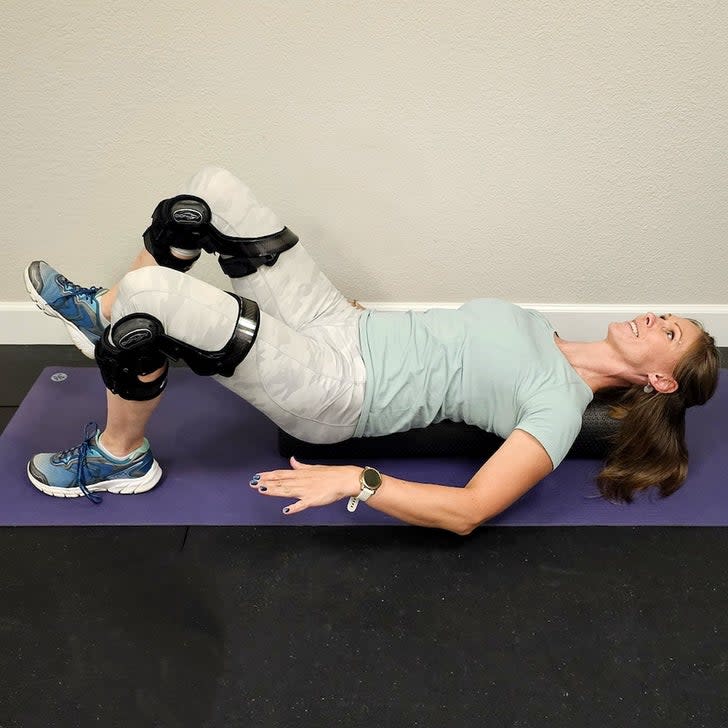
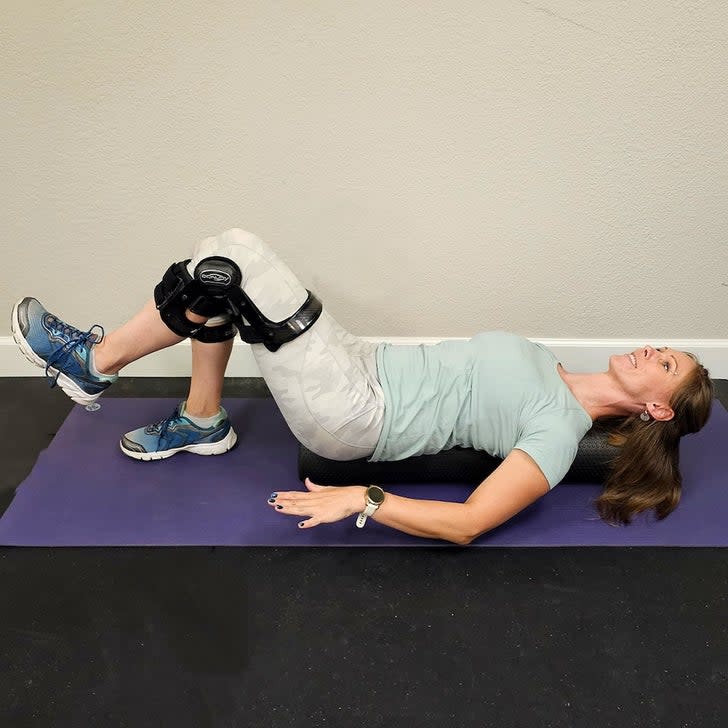
Marching
Start by marching on the foam roller. Perform 6 to 8 reps with each foot once or twice a day.
Lie along the length of the foam roller and hover your hands above the ground by your sides.
Alternate lifting one foot and then the other about 2 inches off the ground during 5 second exhales. Hold the Mewing Tongue position through the set, and inhale as your foot returns to the ground.
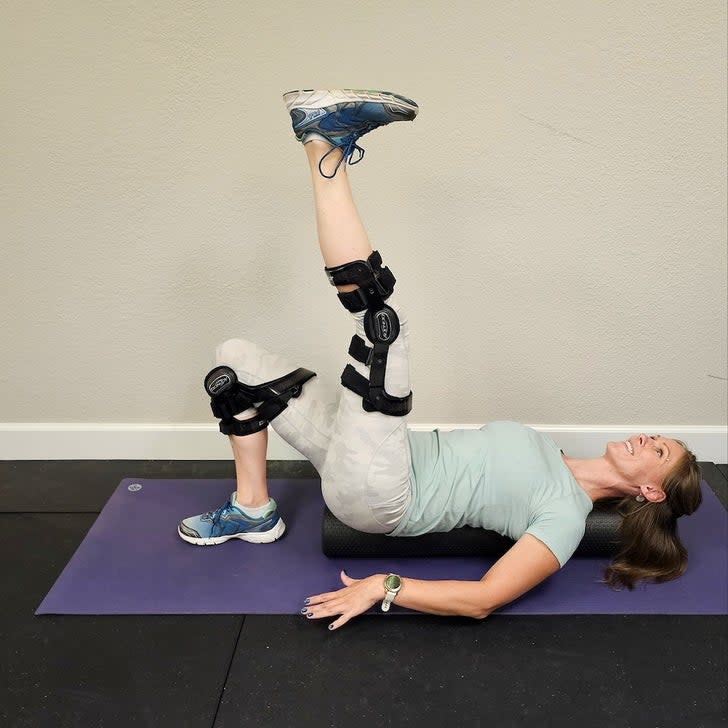
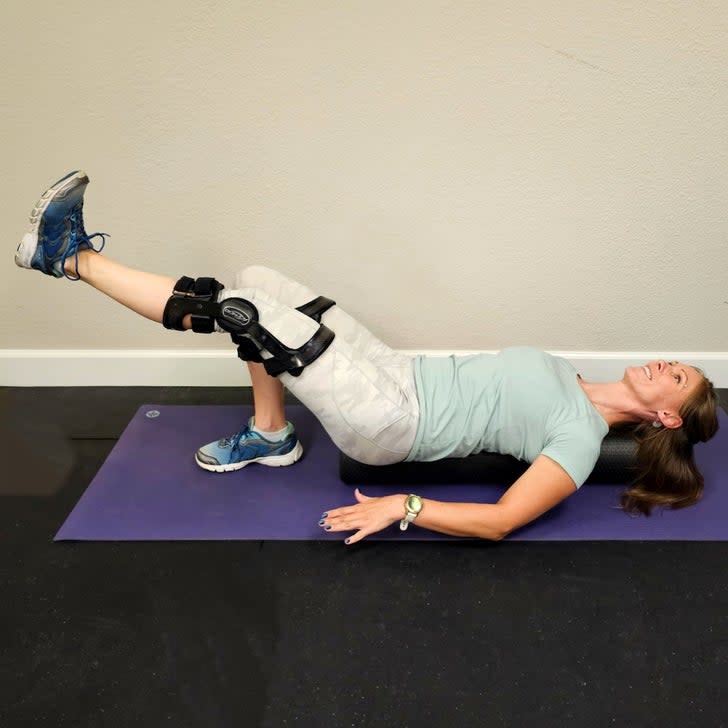
Single Leg lowers
If marching becomes too easy, try this variation. You can start with your hands on the floor if desired for support. Perform 6 to 8 reps on each leg, once or twice a day.
Lie along the length of the foam roller with your hands by your sides hovering off the ground.
Extend one leg straight up to the ceiling and flex your foot. Hold the Mewing Tongue position through the set. Inhale and lower your leg with your knee straight. Exhale, and lift your leg to start.
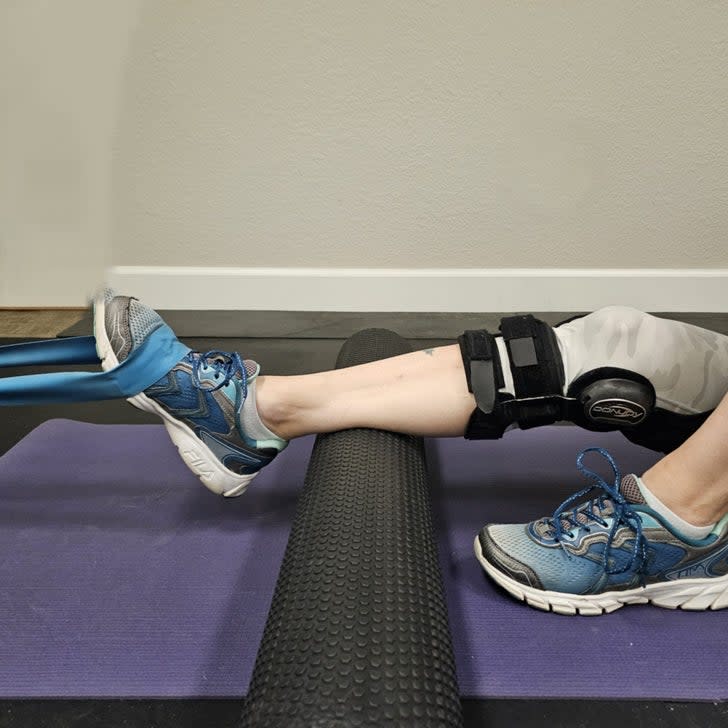
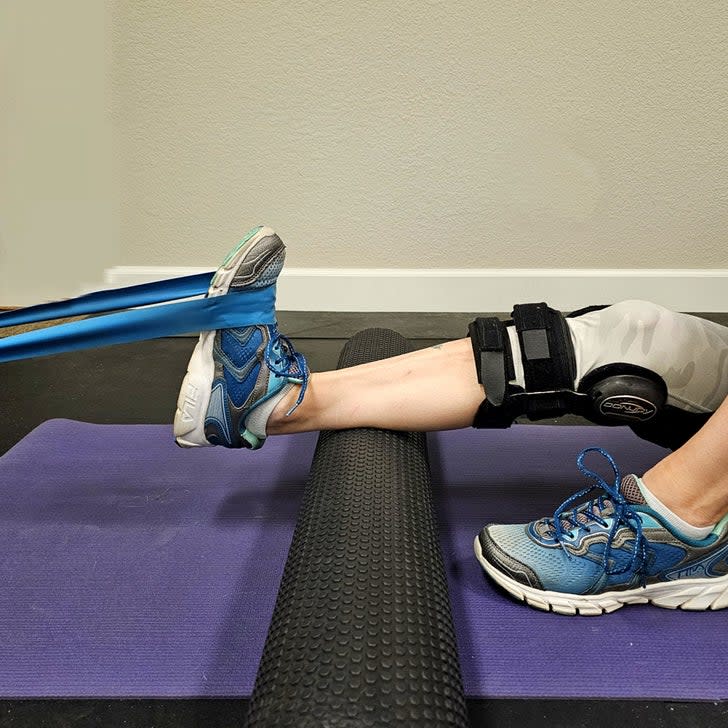
Plantarflexion
While most of your hiking stability comes from your glutes, working on your ankle strength will reduce your chances of rolling it, as well as reduce irritation on the joint. Perform 8 to 12 reps once or twice a day with a medium to heavy resistance band.
Sit on the floor with your leg extended in front of you and resting on a foam roller. Loop a lightweight band around the mound of your forefoot.
Hold the Mewing Tongue position through the set. Exhale as you press the ball of your foot evenly toward the ground.
Slowly return to start and avoid wobbling.
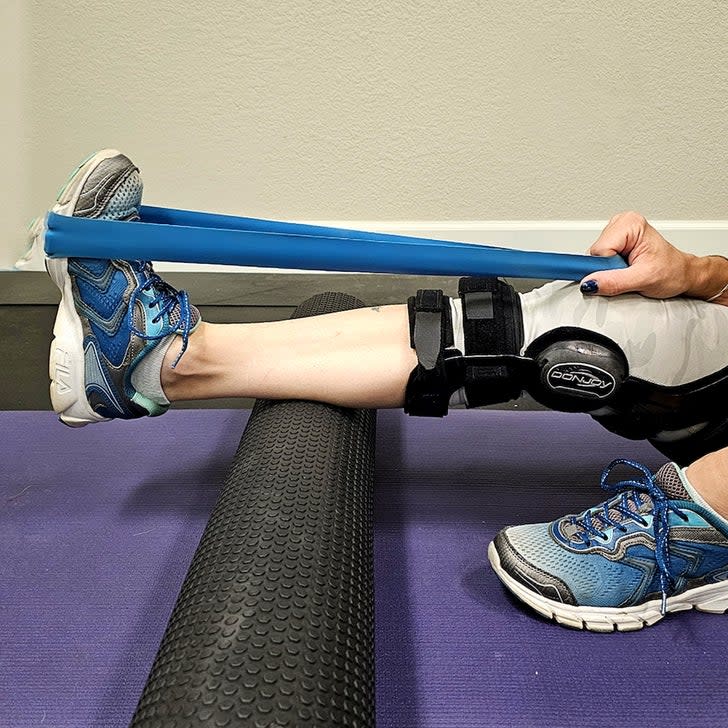
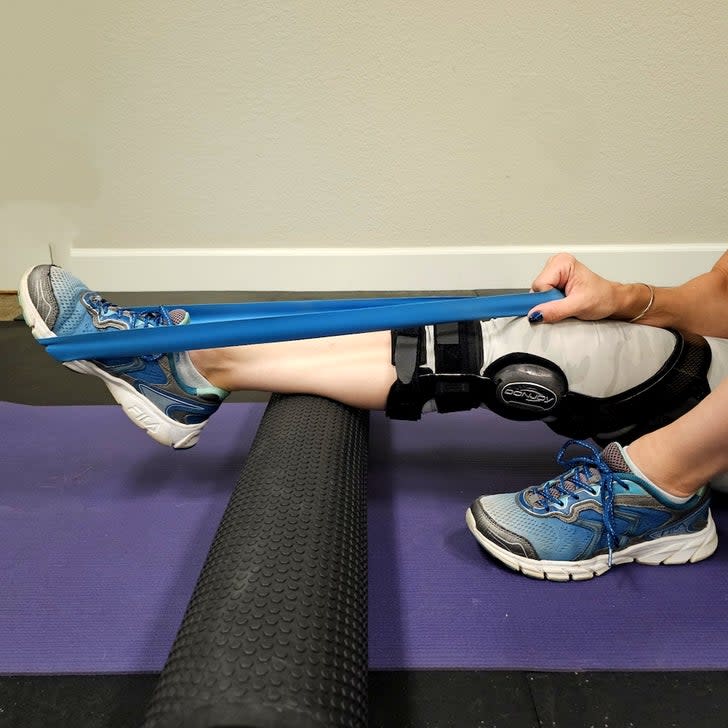
Dorsiflexion
Perform 8 to 12 reps once or twice a day with a medium to heavy resistance band.
Sit on the floor with your calf propped over a foam roller and with the resistance band anchored on a low point with the loop around your toes.
Pull your toes toward your knee keeping your second and third toes in line with your knee.
Return your foot to the starting position with slow control, avoiding wobbling.
Hold the Mewing Tongue position through the set.
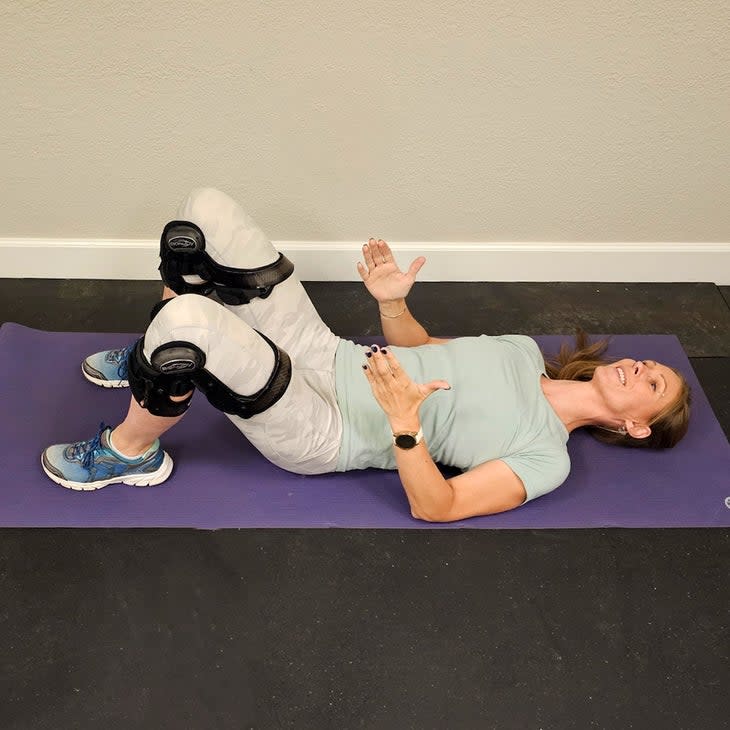
Floor Scapula Retraction
The upper back muscles tend to get tired quickly while hiking, which can make your head tilt forward and eventually irritate your entire back. Strengthening the midback muscles will do wonders for this type of discomfort. Perform 8 to 10 reps once or twice a day.
Lie on your back on the floor with your elbows bent to 90deg and elbows close to your body.
On an exhale, press your entire arm bone from shoulder to elbow against the floor for two counts, then release and inhale. Hold the Mewing Tongue position through the set.
You should feel the midline of your back and the backs of your shoulders working.
Don’t let your back arch; keep your ribcage "stacked" over your pelvis.
For exclusive access to all of our fitness, gear, adventure, and travel stories, plus discounts on trips, events, and gear, sign up for Outside+ today.

